![How To Make/Create an Invitation in Google Docs [Templates + Examples]](https://images.template.net/wp-content/uploads/2023/07/How-To-Make_Create-an-Invitation-in-Google-Docs-Templates-Examples-788x443.png)
How To Make/Create an Invitation in Google Docs [Templates + Examples]
To formally invite someone or a group of people to an event or activity, you will need to send out…
Sep 02, 2025
Storyboard sizes and their form are essential, and while there is no one standard size and shape for all storyboards, you will still need to relate the aspect ratio to the dimension of your media. No matter the method of presentation you select, having a specialized storyboard template on your side will surely add efficiency and quality to your pitch.
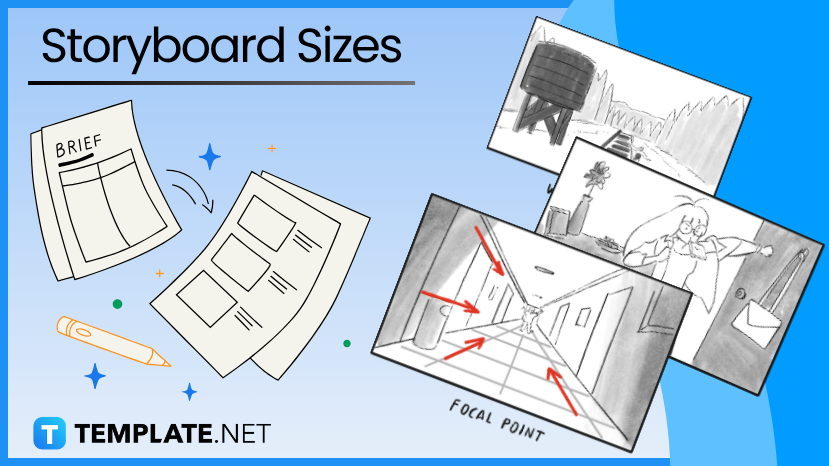
Storyboard sizes play a vital role in planning visual narratives for films, animations, commercials, and presentations. The right dimensions help organize scenes clearly, ensuring each frame effectively communicates the story, timing, and camera angles. In this guide, we’ll explore standard storyboard sizes used in creative industries. Perfect for filmmakers, animators, and content creators aiming to streamline their production process with well-structured, professional storyboards that bring ideas to life visually.

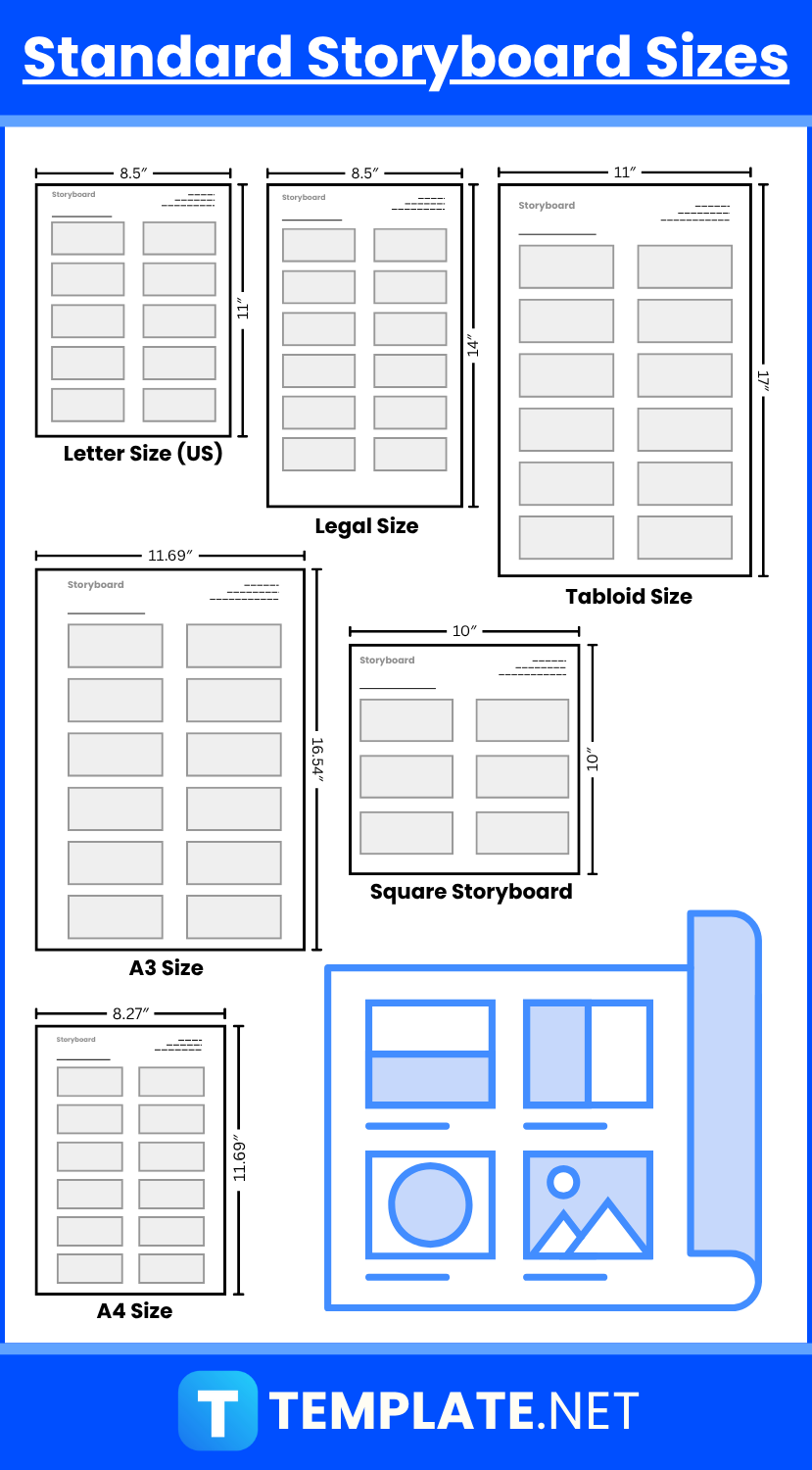
| Storyboard Type | Size (inches) | Size (pixels) | Common Use |
|---|---|---|---|
| Letter Size (US) | 8.5″ × 11″ | 2550 × 3300 px | Widely used in schools, commercials, and story drafts |
| Legal Size | 8.5″ × 14″ | 2550 × 4200 px | Used when more panels or notes are needed |
| Tabloid Size | 11″ × 17″ | 3300 × 5100 px | For detailed storyboards or film previsualization |
| A4 Size (Intl.) | 8.27″ × 11.69″ | 2480 × 3508 px | Standard international print storyboard size |
| A3 Size (Intl.) | 11.69″ × 16.54″ | 3508 × 4961 px | Larger storyboard for presentations |
| 16:9 Digital Frame | Varies (typically horizontal strips) | 1920 × 1080 px | HD layout for animation or film, digital previews |
| Square Storyboard | 10″ × 10″ or 12″ × 12″ | 3000 × 3000 px | For square ad platforms like Instagram/Facebook |
| Web/Presentation Format | Custom, often 1920 × 1080 | 16:9 aspect ratio | Pitch decks, digital storytelling visuals |
Since storyboards are versatile, there is also flexibility in terms of their sizing. You will need to plan on which medium you will be utilizing so that they can fit best together. For your benefit, these are the standard sizes:
An A3-sized storyboard is 11-3/4 by 16-1/2 inches or 297 by 420 mm and is an alternative for storyboard users who want a larger canvas.
A letter-sized storyboard is 8.5 by 11 inches or 215.9 by 279.4 mm, the same as the A4 paper size used in most other countries.
As an alternative to letter paper, the legal paper dimensions in America are 8.5 by 11.75 inches or 216 by 356mm.
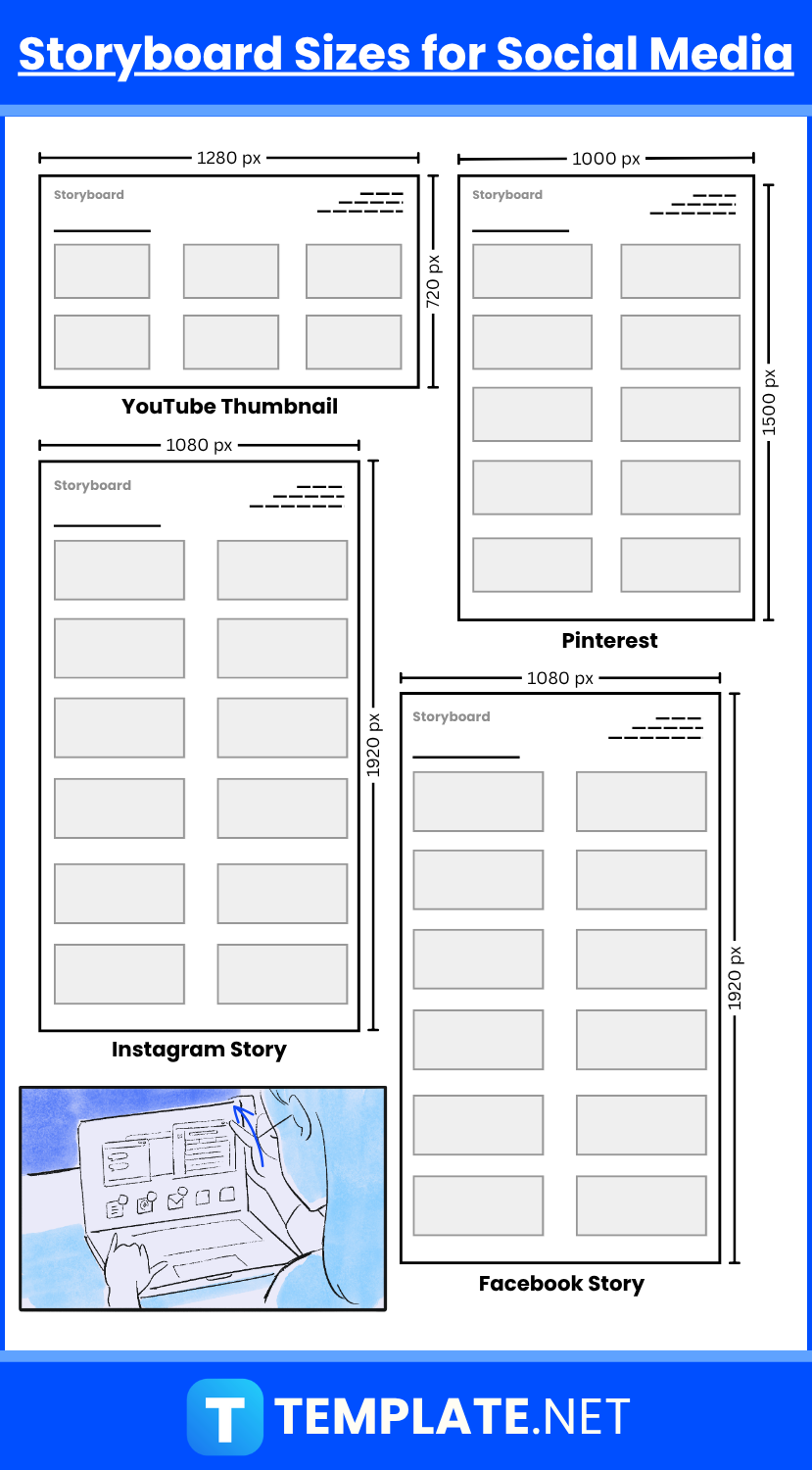
| Platform | Recommended Size (pixels) | Use |
|---|---|---|
| Instagram Story | 1080 × 1920 | Vertical scene storyboarding |
| Facebook Story | 1080 × 1920 | For mobile-based storyboard previews |
| YouTube Thumbnail | 1280 × 720 | For scene preview thumbnails |
| 1000 × 1500 | Long vertical storyboard panels |
| Format | Aspect Ratio | Size (pixels) Example | Common Use Case |
|---|---|---|---|
| TV (Classic) | 4:3 (1.33:1) | 1440 × 1080 or 1024 × 768 | Retro TV shows, cartoons, or vintage-style filmmaking |
| HDTV (Widescreen) | 16:9 | 1920 × 1080 or 1280 × 720 | Modern television, YouTube, web series, video advertising |
| Standard Widescreen | 1.85:1 | 1920 × 1038 or 1280 × 692 | Feature films, cinema-inspired TV series |
| Anamorphic (CinemaScope) | 2.39:1 | 1920 × 803 or 3840 × 1608 | High-end films, cinematic trailers, wide scenic storyboarding |
| IMAX / 70mm | 2.76:1 | 2048 × 741 or 4096 × 1484 | Epic-scale films, science documentaries, premium cinematic releases |
The first films were shown in a 4:3 aspect ratio, and until the arrival of widescreen HDTV, this was the conventional aspect ratio for standard-definition television sets. Today, the 4:3 or 1.33:1 aspect ratio is mainly used for aesthetic purposes, such as recreating a manner of filmmaking before widescreen became the standard.

The most common aspect ratio used today is 16:9, the typical size for high-definition widescreen televisions and most computer displays. Because film aspect ratios are typically wider to generate a more cinematic effect, it is commonly connected with a video filmed for TV and the Internet.
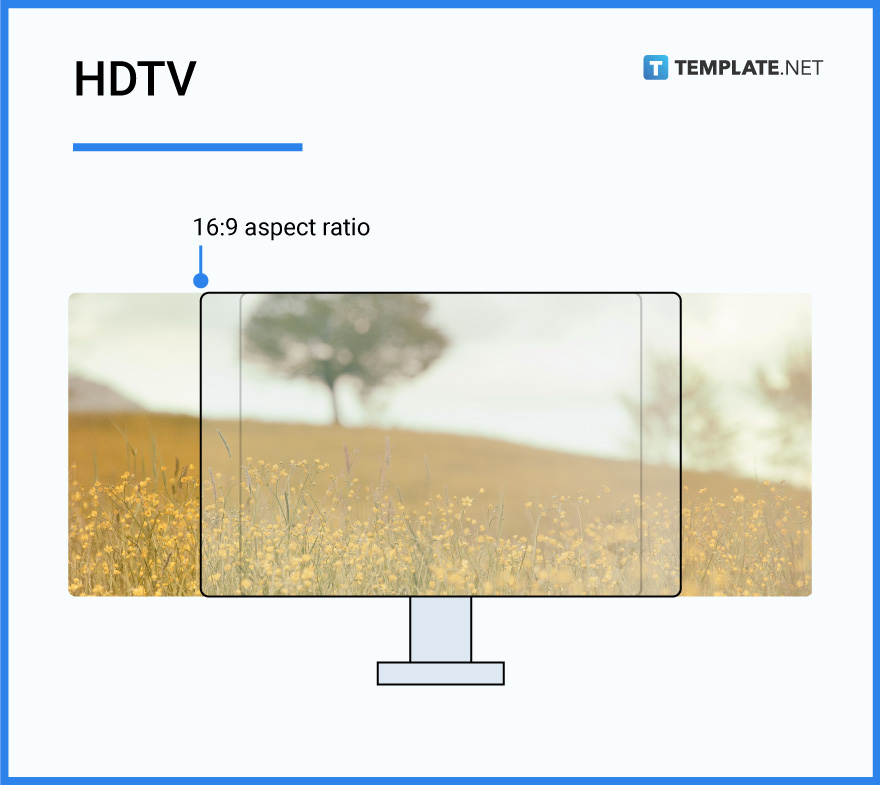
Since the 1.85:1 video is slightly wider than the 16:9 content, it will appear with thin black bars on the top and bottom of the screen when viewed on widescreen TVs and computer displays. Though this is the most frequent ratio for feature films, many TV shows attempting to achieve a cinematic appearance also shoot in 1.85:1.
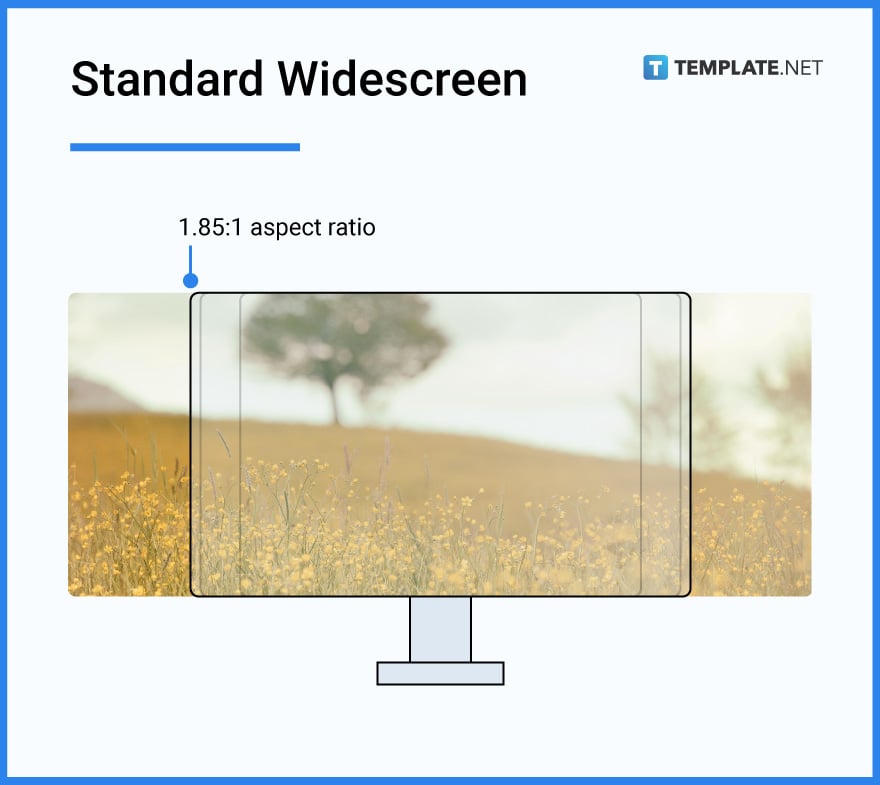
Anamorphic is the most prevalent aspect ratio in contemporary film. It produces an aesthetic typically associated with high-end dramatic feature films, and its broad field of view makes it ideal for filming magnificent vistas. It has a 2.39:1 aspect ratio.
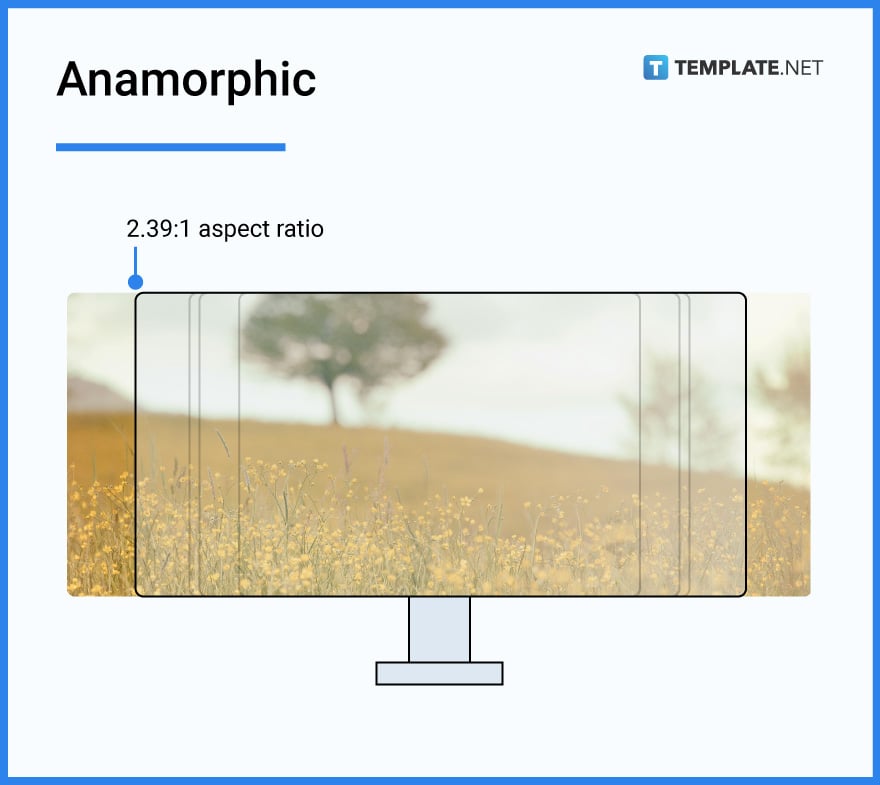
The 2.76:1 or 70mm aspect ratio gained popularity in the late 1950s, but it progressively slipped out of use. As it is frequently shown on IMAX screens, the 70mm aspect ratio gives spectators a one-of-a-kind experience that cannot be replicated on their respective home TV.
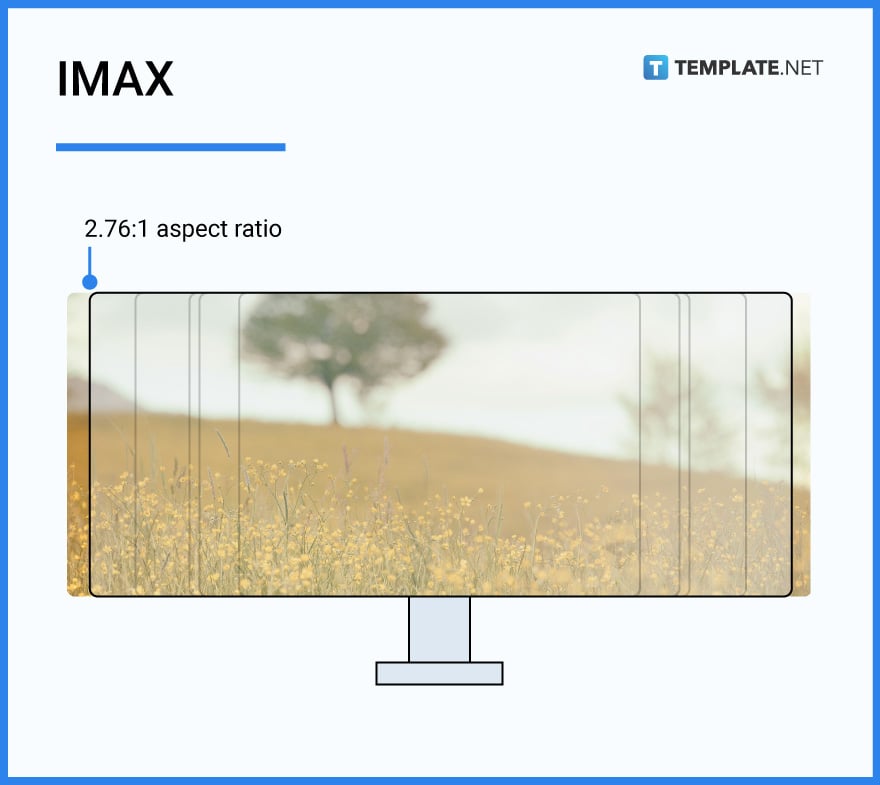
The standard storyboard sizes for print are A3 (11-3/4 by 16-1/2 inches or 297 by 420 mm), Letter (8.5 by 11 inches or 215.9 by 279.4 mm), and Legal (8.5 by 11.75 inches or 216 by 356mm). Since one page is not enough for a storyboard, primarily for animations or feature films, storyboard writers or artists often keep their printed storyboards in an organizer manner through a well-protected envelope or binder.
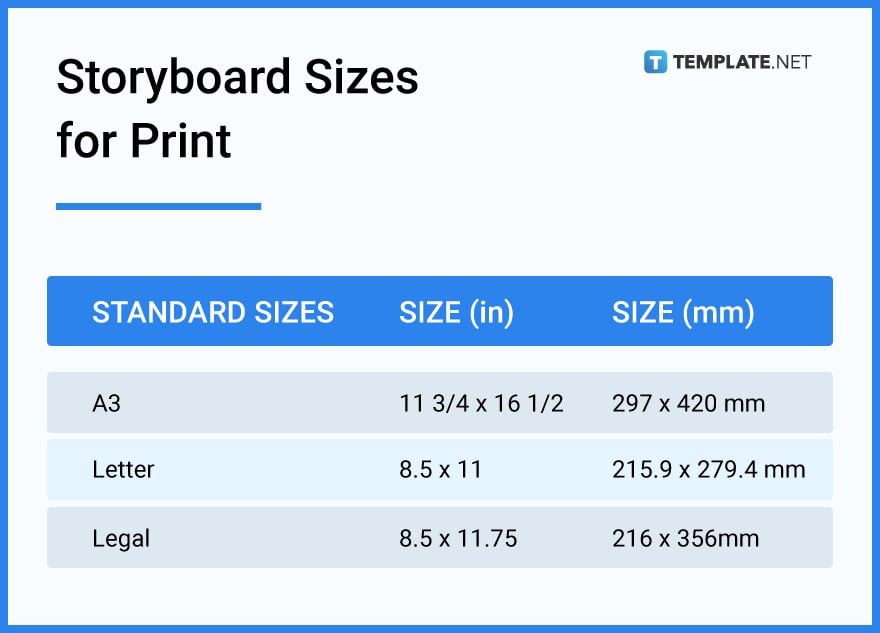
Sending a storyboard through email would need to be limited to a specific digital size since email carriers have a limit. Storyboards may exceed in size as there will be a need to produce numerous pages. Films alone with important shots require more than three pages, but it does not stop there; animation may require more panels to be filled in, which corresponds to an even larger digital size for a storyboard. Upon sending the email of the file, you should keep in mind not to exceed 25 MB.
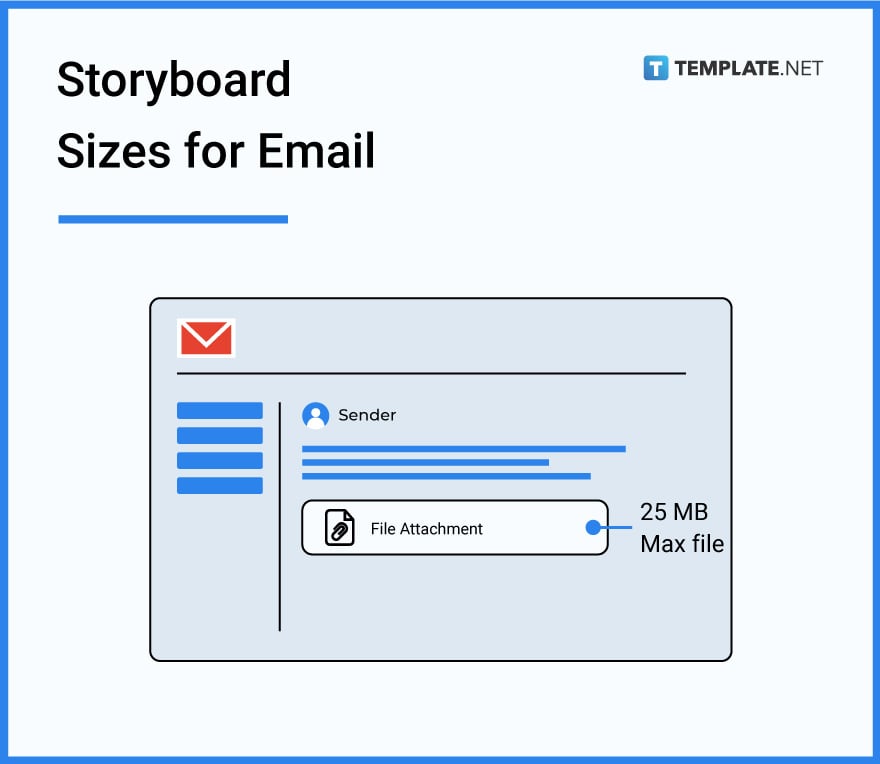
Corporate films come in various formats and sizes, which would mean you have other details to determine before planning the storyboard sizing for your business use. Before constructing a storyboard, examine the film’s aim and where it will be presented. A standard size to use is the letter page or 8.5 by 11 inches or 215.9 by 279.4 mm.
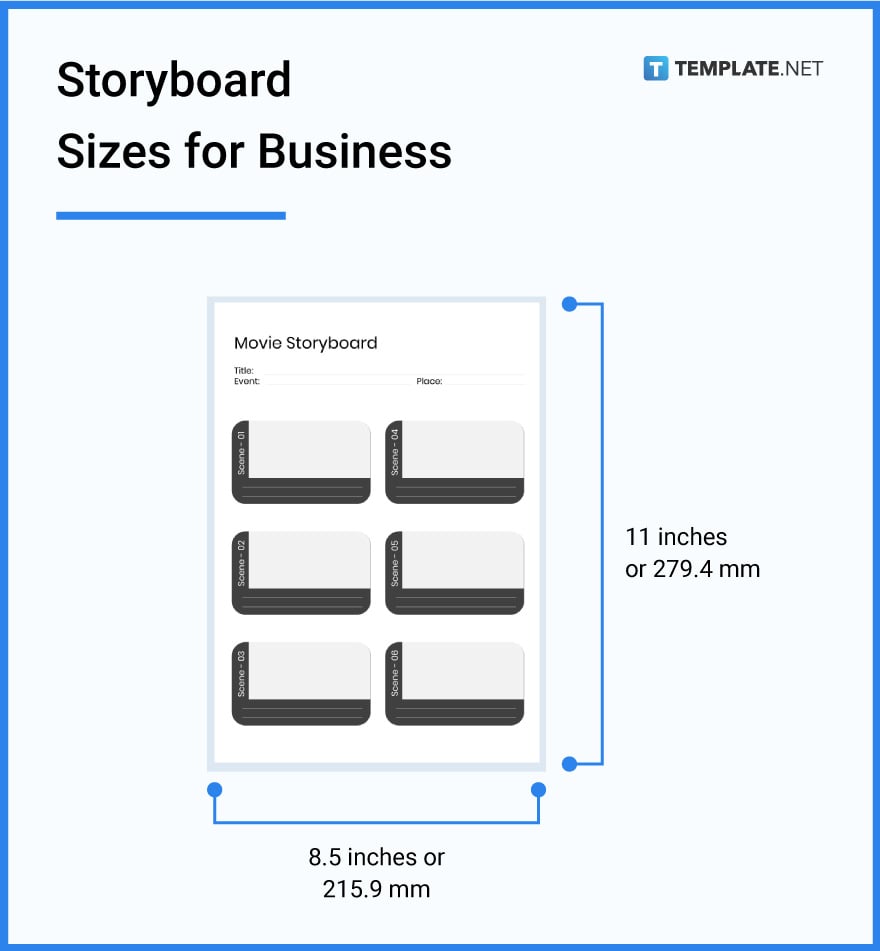
Due to layering, creating storyboards in Photoshop may be difficult. You must know how to make a storyboard in Photoshop if you want to construct their storyboard in Photoshop. The most typical resolution for animation-related storyboards is 1080 × 720, with the desired aspect ratio of 16:9.
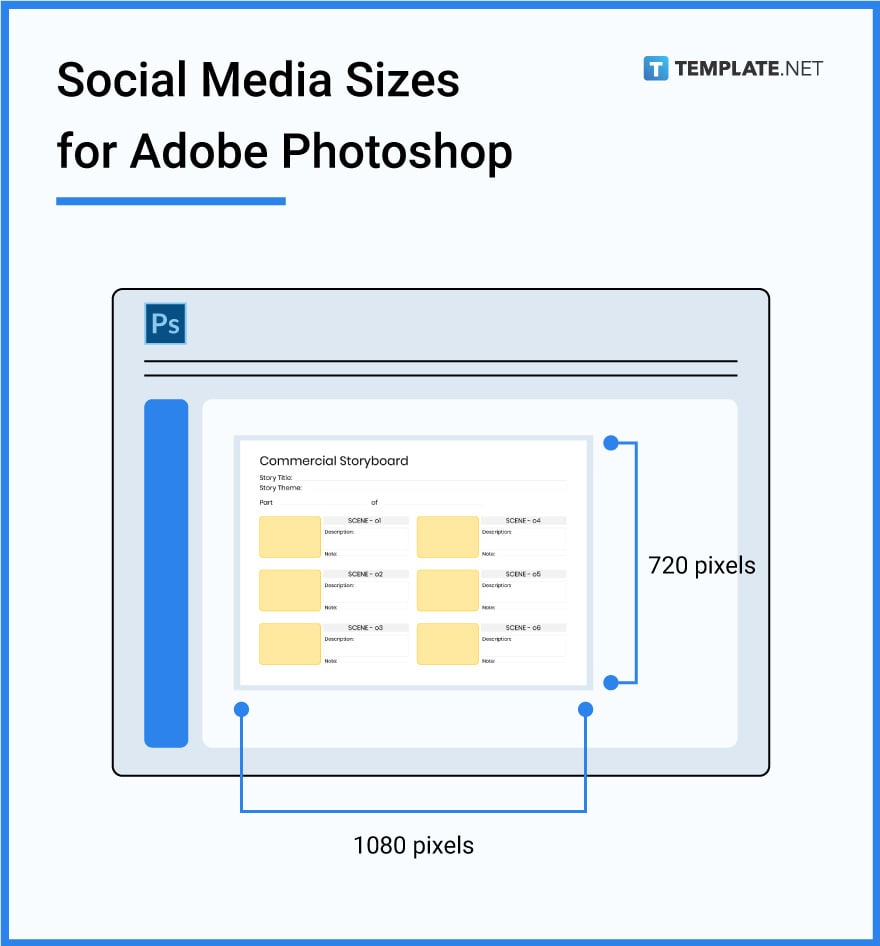
Adobe Illustrator has a maximum artboard or storyboard size. It supports artboard sizes up to 227 × 227 inches; however, if your design is greater, it will not work. When you send it to print, you can always scale it accordingly. You can view the width and height of your choices in the top bar or Transform window.
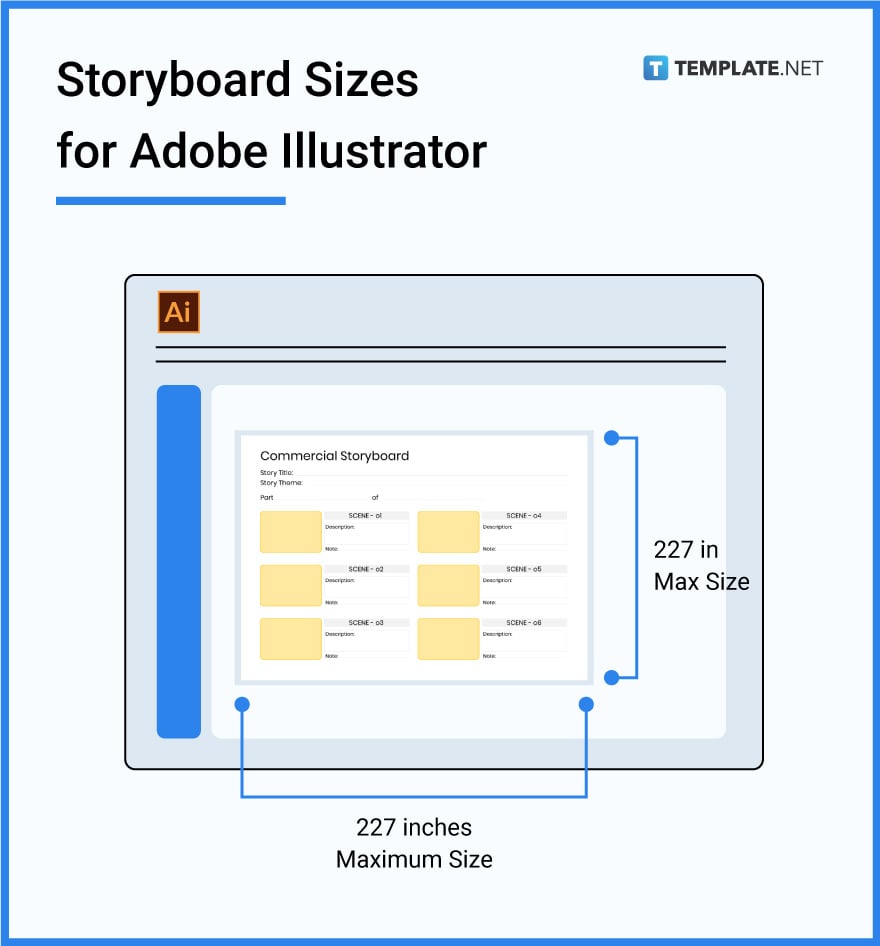
A storyboard layout comprises boxes in a set or row of panels and their designated notes either at the side or bottom.
In a 60-second storyboard, you may anticipate seeing at least 15 to 20 sequences.
Each box is typically 4″ width x 3″ high for television, with three panels on an 8 1/2″ x 11″ sheet.
Measuring the size of a storyboard will be much easier if you utilize a software program or one of the available templates provided.
You can use the handlebar in the bottom right-hand corner to resize the image to fit in the table cell.
For storyboards in Photoshop, the most frequent resolution is 1080 × 720, with the desired aspect ratio of 16:9.
A storyboard size should be between 18″ and 24″ (in one direction) and 24″ and 30″ (in the other) (in the other direction). The suggested size is 18″ × 24″.
Depending on the software program you are using, you will need to locate the sizing in the edit options.
Users of the scroll view content must know the scrollable content width and height, as well as the frames X and Y, such as where the scroll view should be placed and what size.
There is no definite answer, but if you want to preserve your aspect ratio and specify a specified resolution, altering the screen width will modify the screen height to keep it the same.
![How To Make/Create an Invitation in Google Docs [Templates + Examples]](https://images.template.net/wp-content/uploads/2023/07/How-To-Make_Create-an-Invitation-in-Google-Docs-Templates-Examples-788x443.png)
To formally invite someone or a group of people to an event or activity, you will need to send out…
![How To Create an ID Card in Google Docs [Template + Example]](https://images.template.net/wp-content/uploads/2023/07/How-To-Create-an-ID-Card-in-Google-Docs-Template-Example-788x443.png)
ID cards are used as a way to represent an individual to the company or organization they work or volunteer…
![How to Make an ID Card in Microsoft Word [Template + Example]](https://images.template.net/wp-content/uploads/2023/07/How-to-Make-an-ID-Card-in-Microsoft-Word-Template-Example-788x443.png)
ID cards are an essential part of any employee working for a company or an organization to be recognized as…
![How To Make/Create a Book Cover in Google Docs [Templates + Examples]](https://images.template.net/wp-content/uploads/2023/07/How-To-Create-a-Book-Cover-in-Google-Docs-788x443.png)
Aside from protecting a book, book covers are specifically designed to attract readers and convey the essence of the book.…
![How To Make/Create a Book Cover in Microsoft Word [Templates + Examples]](https://images.template.net/wp-content/uploads/2023/07/How-To-Create-a-Book-Cover-in-Microsoft-Word-788x443.png)
A book cover is the outer layer of a book that is used to protect its contents. Book covers are…
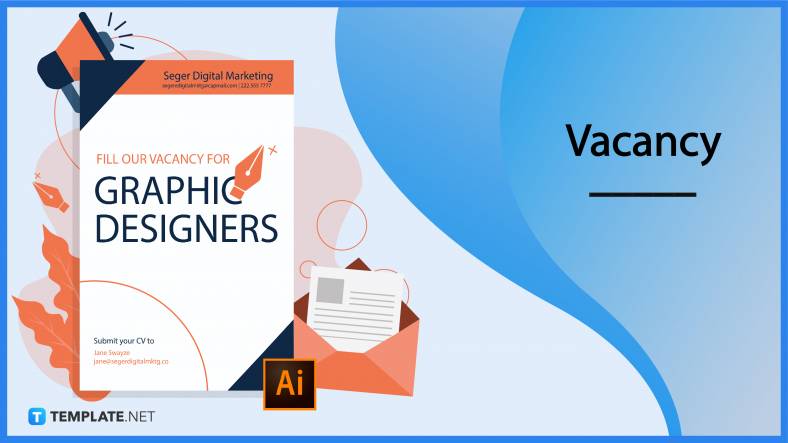
Job vacancy is a common scenario in companies and organizations. Employees leave for all kinds of reasons and when they…
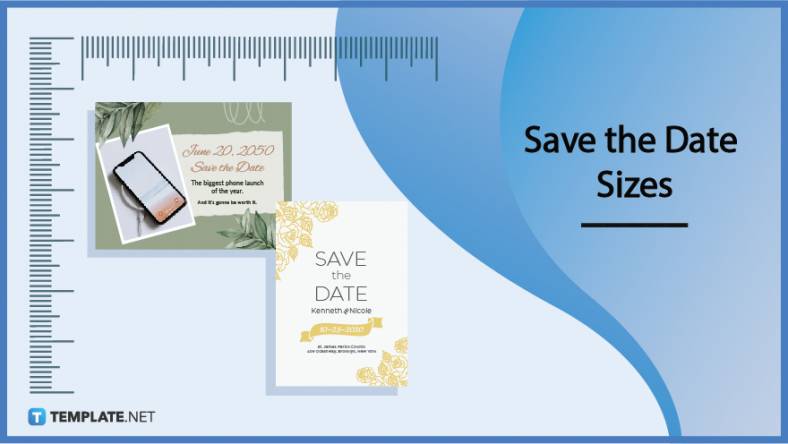
Save the date sizes are usually the same size as a formal invitation. But there are a number of different…
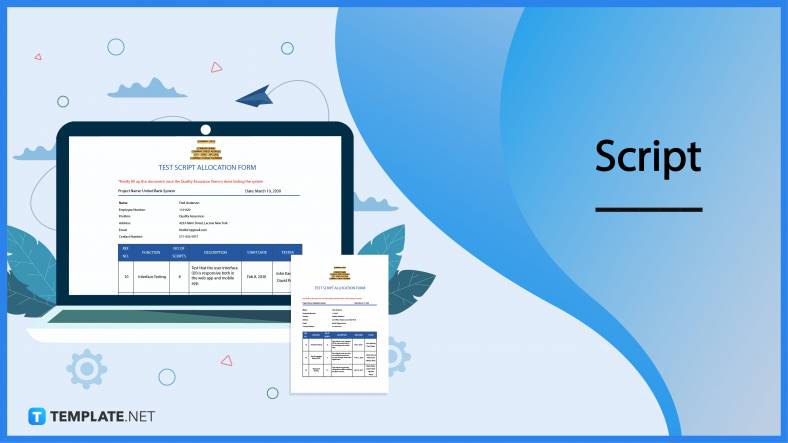
Script is a popular word that is frequently used in the entertainment world. There are a variety of areas and usages…
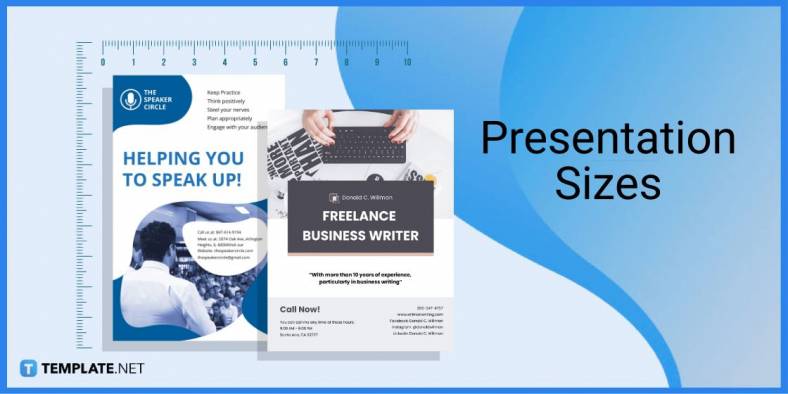
Presentations may not look as pleasant as how you design them with pictures, animations, videos, and other graphic designs without…